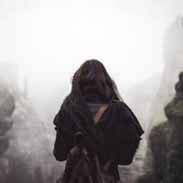Crazy Horse And Sitting Bull Flashcards, test questions and answers
Discover flashcards, test exam answers, and assignments to help you learn more about Crazy Horse And Sitting Bull and other subjects. Don’t miss the chance to use them for more effective college education. Use our database of questions and answers on Crazy Horse And Sitting Bull and get quick solutions for your test.
What is Crazy Horse And Sitting Bull?
Crazy Horse and Sitting Bull were two of the most iconic Native American leaders of the 19th century. The two men have become legendary figures in American history, and their legacies have been preserved for generations through oral histories, art, and literature. Though their stories are intertwined, it is important to note that each warrior had a unique life story and played a critical role in the struggle for Native American rights. Crazy Horse was born circa 1840 in present-day South Dakota. He was a member of the Oglala Lakota tribe and grew up as an avid horseman who enjoyed riding on the range with his family’s horses. He developed into an excellent fighter at an early age when he defended his people from enemy tribes during intertribal skirmishes. By 1868, Crazy Horse was leading war parties against U.S. forces during Red Cloud’s War (1866-1868). He also took part in many other battles against white settlers throughout his career as a warrior leader. His greatest victory came at Little Bighorn in 1876 when he led a coalition of Sioux and Cheyenne warriors to victory over U.S troops commanded by General George Armstrong Custer – this battle has since become known as Custer’s Last Stand. After this battle, Crazy Horse became one of the most respected leaders amongst Native Americans across North America for his bravery and courage during wartime engagements with U.S forces attempting to expand westward onto native lands without proper treaties or negotiation agreements with Indigenous peoples Meanwhile, Sitting Bull (born circa 1831) rose to notoriety as another great leader amongst the Lakota people after defeating General Custer’s troops at Little Bighorn alongside Crazy Horse’s warriors – this event marked one of the greatest victories ever secured by indigenous peoples against European colonial powers anywhere in world history up until that time period. Like Crazy Horse, Sitting Bull was an avid horseman who fought fiercely against enemy tribes while defending his own people’s way of life from encroaching white settlers attempting to take native lands without proper compensation or treaty agreements with Indigenous nations like the Lakota Sioux Nation which Sitting Bull belonged too.













